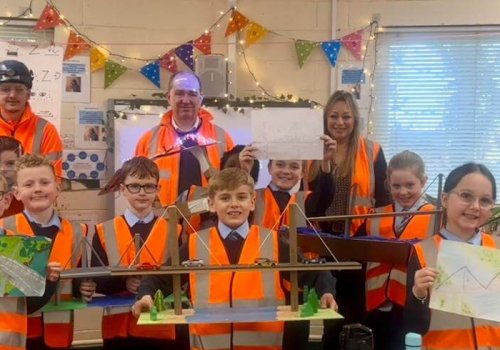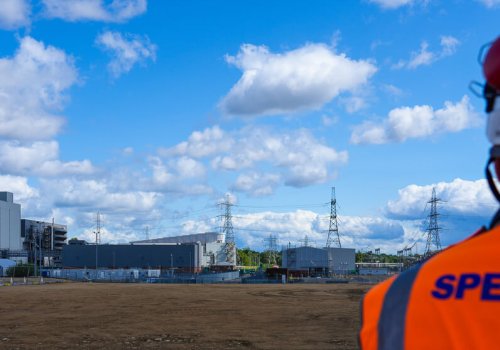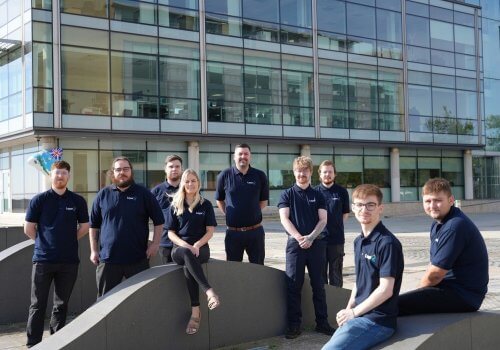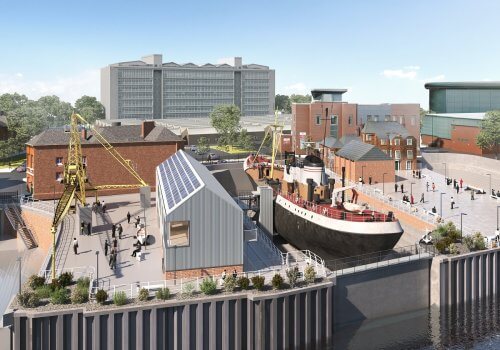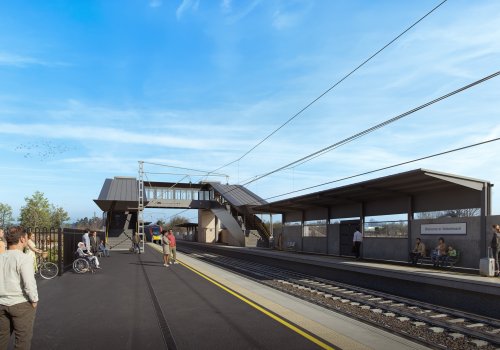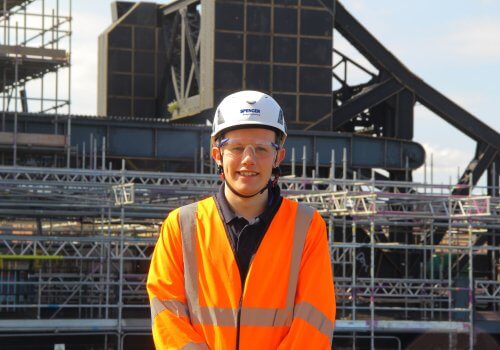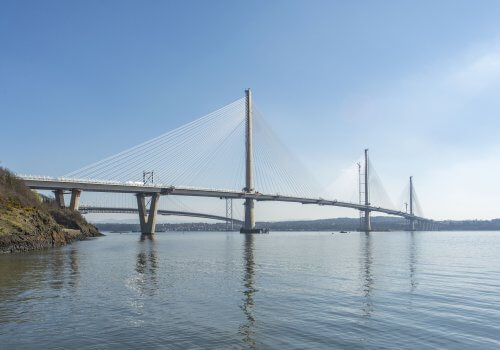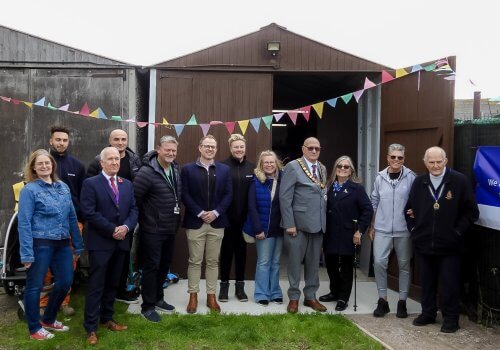High-level bridge maintenance specialist Spencer Group has completed a mammoth project that will remain the largest of its kind ever to be undertaken worldwide.
The British engineering company has delivered successfully the world’s largest retro-fit cable dehumidification project on Denmark’s vast Great Belt crossing. The 18-month project saw vital work carried out to protect the main cables on the East Bridge, the third largest suspension bridge in the world and part of the giant Great Belt network, linking the eastern and western parts of Denmark.
The project will never be equalled in scale as the only two bridges globally that are bigger than the East Bridge were constructed with dehumidification technology pre-installed.

The Spencer team overcame numerous technical, logistical and climatic challenges to complete the project for client, A/S Storebælt, over the spring and summer seasons of 2014 and 2015. It was delivered with no safety accidents or incidents, despite the challenging conditions, and without any disruption to the bridge’s 31,000 daily vehicle crossings.
Throughout the project, the Spencer team and staff from Danish sub-contractor Davai, which supplies labour for specialist high-level works, walked along the cables to access Spencer’s trademarked Cable Crawler™ gantries to carry out the dehumidification works or deliver equipment and supplies.
This involved personnel walking along the cables, supported by hand ropes and wearing full body harness, for as far as 800 metres at a time, climbing for up to 190 metres at steep gradients of up to 28 degrees.
With its towers reaching 254 metres – one of the highest points in Denmark – the East Bridge is almost 100 metres higher than the Humber Bridge, which was the longest suspension bridge in the world when it opened in 1981, while its span of 1.6 kilometres is 15 per cent longer.

The vast East Bridge with Spencer’s four gantries in place during the work. Spencer’s world-leading high-level access system ensured traffic movements continued throughout the project.
Project Manager Andy Macdonald said: “Every bridge project has its own unique set of challenges, but this was a major step up and on a different scale from any of those we have previously undertaken.
“Throughout the project we worked very closely and collaboratively with the client, who were highly supportive and understanding of the complexities and challenges involved.”
Mr Macdonald paid tribute to project team for their technical expertise and physical endurance while working in such testing conditions.
He added: “This was a brilliant team effort, which demonstrated the technical capability within the Spencer business and our commitment to deliver a painstaking project to exceptional levels of quality.
“Jobs like this are not for people of a weak disposition. The guys are pretty tough – they have to be! After a few days you just get used to working so high up, with just the bridge deck below you. On a sunny, calm day it was the best place in the world to work. The views were stunning – you could see for miles.”
Weather was a major challenge for the project. Staff could not work from the gantries in high winds while, in wet conditions, the wrapping process could not be undertaken, nor could personnel walk on the cables.
Despite these restrictions, almost six kilometres of cables on the East Bridge were sealed in an elastomeric wrap known as Cableguard. As each section was wrapped, thermal blankets were used to heat the wrap and create a continuous airtight seal around the main cables before dry air was pumped into the lengths of wrapped cable.
The dehumidified air absorbs moisture inside the cables, carrying it out to the atmosphere at an exhaust point further along the cable, thus preventing corrosion and extending the life of the bridge.
Spencer is now actively pursuing further high-level bridge maintenance projects in the UK and Europe, including dehumidification schemes.
Spencer Operations Director Pete Vessey said: “The successful delivery of this project is a phenomenal achievement, worthy of the unique status it will retain.
“It required extraordinary technical expertise, innovation, resourcefulness, determination and physical endurance – not to mention a team with a very good head for heights!
“We are very proud to have completed a world-class project and to have ensured a magnificent structure will be a vital part of the transport infrastructure in Denmark for many, many years to come.”
Eight Spencer staff worked in Denmark for the duration of the £8m project, with a 16-strong team from Davai and a Danish sub-contractor Belvent, which provided the dehumidifiers, pipework and injection and exhaust sleeves.
The Spencer and Davai teams had to walk the cables at least twice a day, seven days a week, to start work and after lunch to access the four Cable Crawler™ gantries which remained attached to the cables. Conditions were made more comfortable by the installation of incinerating toilet systems at the top of each of the towers – making these the highest lavatories in Denmark.

Workers walk down a main cable at the end of a shift delivering the largest project of its kind that will ever be undertaken.
The culmination of the project was a month-long comprehensive programme of testing to ensure the wrapping had provided an air-tight seal across all the main cables.
Lars Fuhr Pedersen, Technical Director, A/S Storebælt, said: “Spencer Group has delivered a very important piece of work in respect of our ongoing maintenance of the East Bridge and in safeguarding its lifespan of at least 100 years.
“We have enjoyed an excellent working relationship with Spencer because of their diligent and committed approach and the high standard of their work.
“We also appreciate the importance that Spencer has assigned to safety, which means that the project has been completed with no accidents whatsoever.”
Successful delivery of the project reinforces Spencer’s worldwide reputation for high-level bridge works. The company has used its unique Cable Crawler™ gantry system to enable vital dehumidification work to prevent corrosion of cables on the Severn, Forth Road and Humber suspension bridges in the UK, the Alvsborg Bridge in Sweden and now the East Bridge.
Spencer’s innovative traversing system enables the negotiation of the cable infrastructure without returning the gantries to the bridge deck, thereby eliminating the need for lane closures or other traffic management measures after initial installation. This is a huge benefit for operators of structures which form a critical part of the transport and socio-economic infrastructure.
Spencer’s expertise in high-level bridge work has been recognised by another project, to safeguard the structural integrity of the Humber Bridge, being shortlisted for the UK Prime Minister’s Better Public Building Award, the pinnacle of the British Construction Industry Awards 2015.
This complex scheme, completed earlier this year, involved the replacement of load-bearing “A-frames”, which connect the main span bridge deck to the towers at either end of the bridge. It was also nominated in the Civil Engineering Project of the Year (up to £10m) category in the same awards.
